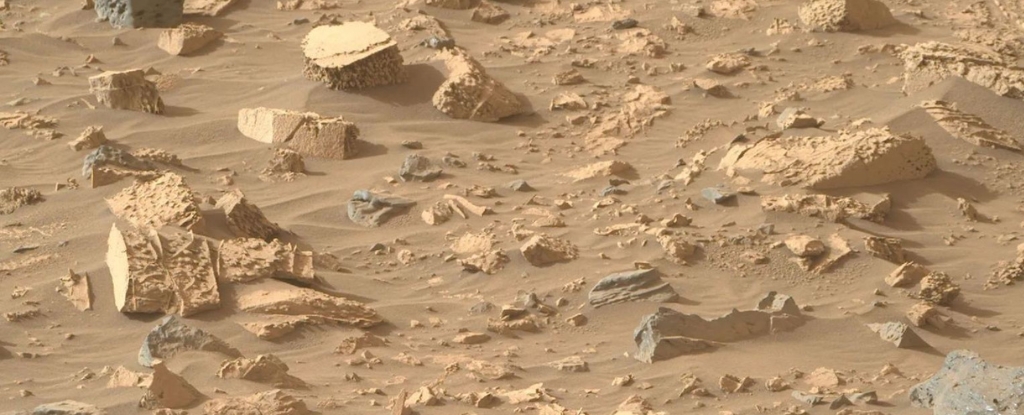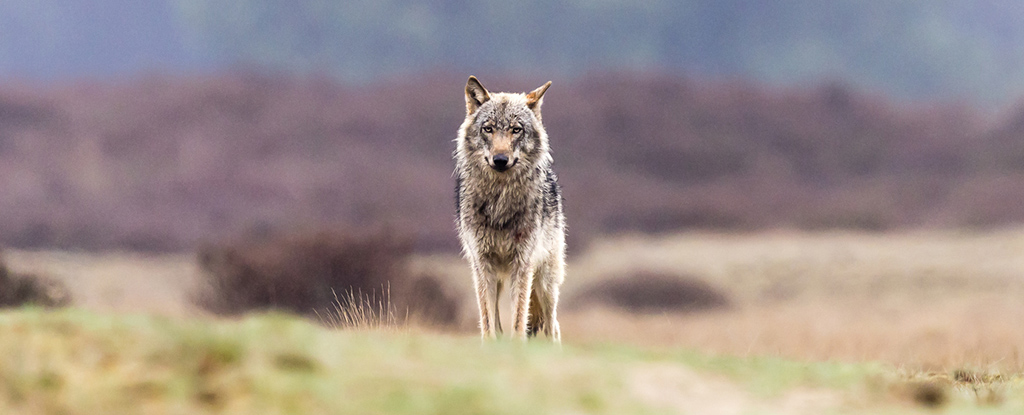NASA’s Perseverance Rover has left Mount Washburn behind and arrived at its next destination, Bright Angel.
It found an unusual type of rock there that scientists are calling ‘popcorn rock.’ The odd rock is more evidence that water was once present in Jezero Crater.
Perseverance’s mission is centred on life on ancient Mars. Along with searching for fossilized evidence of ancient life, it’s searching for and trying to understand environments that could have supported life.
That’s why it’s in Jezero Crater, an ancient paleolake with a delta of sediments and other intriguing geological features.
On Sol 1175 of its mission, Perseverance arrived at Bright Angel, a scientifically interesting region that’s part of the river channel that fed into Jezero Crater.
Bright Angel is noted for light-toned rocky outcrops that are either ancient sediments that filled the channel or much older rock exposed by the river.
The image below shows the rover’s path leading to Bright Angel. The white portion shows where Perseverance paralleled the Neretva Vallis river channel, and the blue portion shows where it travelled through the channel.
The light-toned rocks of Bright Angel are clearly visible.
As Perseverance worked its way toward Bright Angel, mission personnel could see the light rocks in the distance. But the route to the new destination wasn’t easy. The rover encountered a boulder field that proved so arduous that operators changed course.
“We started paralleling the channel in late January and were making pretty good progress, but then the boulders became bigger and more numerous,” said Evan Graser, Perseverance’s deputy strategic route planner lead at NASA’s Jet Propulsion Laboratory in Southern California.
“What had been drives averaging over a hundred meters per Martian day went down to only tens of meters. It was frustrating.”
Perseverance has two modes of travel. In rougher terrain, the route planning team uses images to plan the rover’s route about 30 meters at a time. To travel further than that in a single sol, the team relies on Perseverance’s autopilot mode, called AutoNav.
But as the route through the boulder field became more difficult, AutoNav struggled. It sometimes just stopped, which is the safest option. But that means the drive to Bright Angel was taking far longer than anticipated.
“We had been eyeing the river channel just to the north as we went, hoping to find a section where the dunes were small and far enough apart for a rover to pass between – because dunes have been known to eat Mars rovers,” said Graser.
“Perseverance also needed an entrance ramp we could safely travel down. When the imagery showed both, we made a beeline for it.”
The rover was rerouted through the dune field and across the river channel, reducing its drive by several weeks.

Perseverance is nearing the end of its fourth science phase. It’s been searching for carbonate rocks and olivine in the Margin Unit, which is along the inside of Jezero Crater’s rim. But at Bright Angel, it hoped to find different rocks.
That’s exactly what’s happened.
According to a NASA press release, geologists were mesmerized by what they saw. Some of the rocks are densely packed with spheres, which earned them the name ‘popcorn rocks.’

The rocks are also full of ridges that look like mineral veins. Mineral veins occur when water transports minerals through rock and deposits them.
Mineral veins are common on wet, watery Earth, and rovers have spotted them elsewhere on Mars.
The popcorn features could also be evidence of water. Like the mineral veins, they indicate that water flowed through these rocks.

The next step is to determine what minerals are present in these popcorn rocks. Perseverance will work its way up Bright Angel, taking measurements as it goes.
On the weekend, it’ll use its abrasion tool and other instruments to take an even closer look. It’ll vaporize some of the rock and use its SuperCam suite of instruments to examine the rocks’ chemistry.
The decision to take a sample for eventual return to Earth (hopefully) will rest on those results.
Once Perseverance is finished at Bright Angel, the rover will make its way south again, across Neretva Vallis, to its next destination: Serpentine Rapids.
This article was originally published by Universe Today. Read the original article.





